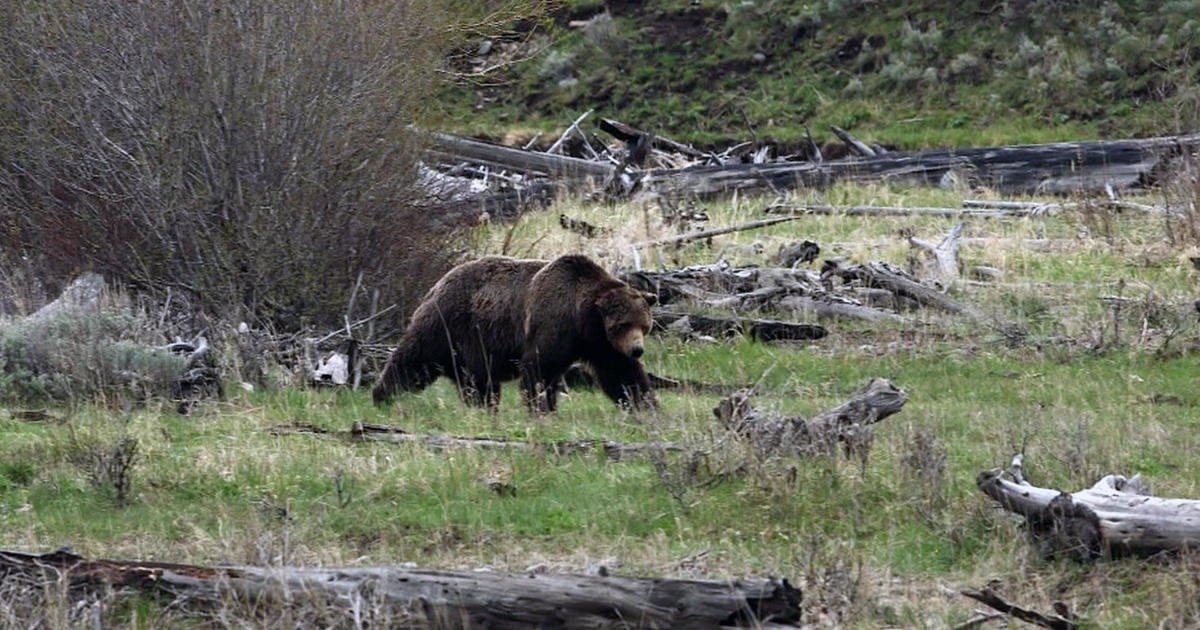Montana hasn’t seen this many grizzly bears in 150 years. That’s because they were protected on the endangered list starting 45 years ago after years of aggressive elimination nearly wiped them out. But the human population has also grown considerably in the area between and around Glacier and Yellowstone National Parks, where the bears’ numbers are coming back strongest. Bill Whitaker reports on how the giant predators and their human neighbors are getting along in a story of conservation and conflict on the next edition of 60 Minutes, Sunday, October 11 at 7:30 p.m. ET and 7 p.m. PT on CBS.
“Grizzly bears were listed in 1975 as a threatened species in the lower 48 states… They’ve probably more than tripled their numbers and their range now is more than double what it was at the time of listing,” says Hilary Cooley, the Federal Fish and Wildlife officer in charge of the bears’ recovery. Some conservation efforts include state officers trapping bears to outfit them with microchips for identification and, especially for females, with radio collars that allow monitoring of the bears’ recovery. Whitaker and his team recorded the trapping, tranquilizing and tagging of a 5-year-old, 300-pound male grizzly deep in the wilderness of Montana.
Whitaker also speaks to some people who live near enough to the wilderness to be impacted by the giant predators. “We had 18 [bears] several years in a row in our cornfield and nobody believed that I had that many until they put cameras up,” says Mission Valley farmer Greg Schock. The huge animals trampled and ate up to a quarter of Schock’s corn. He says grizzlies live only a mile away from his home and he’s resigned to them. “I think we have to… coexist… who’s leaving? The bears aren’t leaving and we aren’t leaving,” he tells Whitaker.
Bryce Andrews, a rancher, author and field director for a non-profit called People and Carnivores, helps put up electric fences to protect crops and livestock from bears. They are particularly voracious now, in the fall, as they fatten up in preparation for a long winter in hibernation. And they’ll eat just about anything. “Anything with caloric value, a bear will turn it into what they need to survive,” says Andrews. “Any and everything. They’ll come for bird seed. They’ll come for the residue on a barbecue.”
Says Cooley, “Bears can be really hard to live with. They kill livestock. There are producers in that area who have 20, 30 cows a year killed by grizzly bears… it’s a lot. It’s a big impact.”
The bears will come too close to humans on occasion; authorities will forgive first-time offenders, but repeaters are often not tolerated. “Bears can kill people. And it’s something we don’t mess with,” Cooley tells Whitaker. “If there’s a threat to human safety, we remove it right off the bat.”
Cooley had to authorize the killing of nearly 50 grizzlies last year. “It’s the worst part of the job… but it’s necessary.”
Sometimes the tables are turned and humans come too close to the bears. Anders Broste was nearly killed by a grizzly while hunting in the wilderness near his Montana home in 2018. He tells Whitaker what happened. “It bit my arm here, kind of thrashed it around and then bit my leg here. Started pulling on me and kind of tossing me around. And then it just dropped my foot and ran off,” he recalls. “I literally remember his brown butt just running off into the woods.” He spent six days in the hospital and endured three surgeries and years of physical therapy.
Broste tells Whitaker it was he who intruded on the bear and while he doesn’t ever want to experience such a close encounter again, he embraces their presence. “I think it’s part of what makes Montana wild. If we didn’t have grizzly bears… it’d be a little less wild. They’re a part of our ecosystem.”
